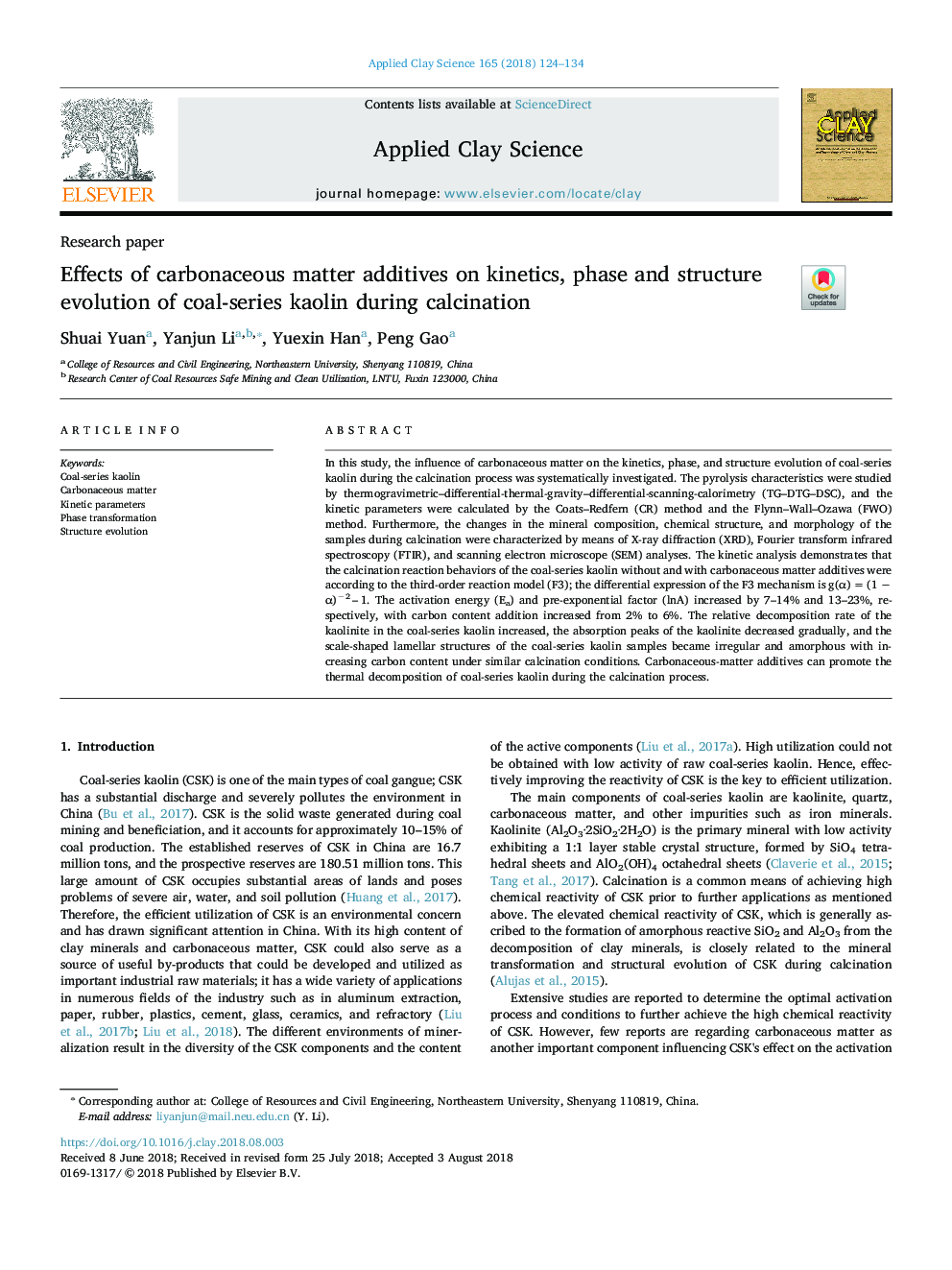| Article ID | Journal | Published Year | Pages | File Type |
|---|---|---|---|---|
| 8045550 | Applied Clay Science | 2018 | 11 Pages |
Abstract
In this study, the influence of carbonaceous matter on the kinetics, phase, and structure evolution of coal-series kaolin during the calcination process was systematically investigated. The pyrolysis characteristics were studied by thermogravimetric-differential-thermal-gravity-differential-scanning-calorimetry (TG-DTG-DSC), and the kinetic parameters were calculated by the Coats-Redfern (CR) method and the Flynn-Wall-Ozawa (FWO) method. Furthermore, the changes in the mineral composition, chemical structure, and morphology of the samples during calcination were characterized by means of X-ray diffraction (XRD), Fourier transform infrared spectroscopy (FTIR), and scanning electron microscope (SEM) analyses. The kinetic analysis demonstrates that the calcination reaction behaviors of the coal-series kaolin without and with carbonaceous matter additives were according to the third-order reaction model (F3); the differential expression of the F3 mechanism is g(α)â¯=â¯(1 â α)â2â¯-â¯1. The activation energy (Ea) and pre-exponential factor (lnA) increased by 7-14% and 13-23%, respectively, with carbon content addition increased from 2% to 6%. The relative decomposition rate of the kaolinite in the coal-series kaolin increased, the absorption peaks of the kaolinite decreased gradually, and the scale-shaped lamellar structures of the coal-series kaolin samples became irregular and amorphous with increasing carbon content under similar calcination conditions. Carbonaceous-matter additives can promote the thermal decomposition of coal-series kaolin during the calcination process.
Keywords
Related Topics
Physical Sciences and Engineering
Earth and Planetary Sciences
Geochemistry and Petrology
Authors
Shuai Yuan, Yanjun Li, Yuexin Han, Peng Gao,
